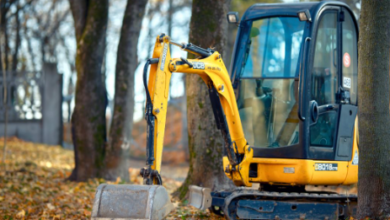Examining Roof Access Options to Ensure Accessibility and Safety

Roof access enables employees to carry out inspections, repairs, and other activities at heights, which is a crucial component of building maintenance and safety. But getting to roofs may be very difficult and dangerous, especially on commercial and industrial structures. Numerous roof access solutions have been created in response to these worries in order to guarantee the accessibility and safety of personnel while they are operating at an elevation. This post will discuss the value of roof access solutions and the many choices that facility managers and building owners have.
How Important Roof Access Is?
In addition to providing structural support and shielding assets and inhabitants from the weather, roofs are essential building components. Nonetheless, in order to guarantee the building’s continuous operation and safety, access to the rooftop is often required for maintenance, repairs, and inspections. In the absence of appropriate roof access solutions, workers run the risk of being hurt or killed by falls, slips, and trips. Furthermore, inaccessible roofs might make it more difficult to do regular maintenance, which could result in higher expenses and even structure damage.
Roof Access Solution Types
There are several roof access options to suit the various requirements of various structures and sectors of the economy. These remedies include anything from basic access hatches to elaborate roof walkway systems and fall safety devices. The following are some of the most popular roof access options:
1. Access Hatches: From within the building, access hatches provide a quick and easy means to reach roofs. These hatches, which are usually mounted on walls or ceilings, provide employees with a safe way to access the roof. For safe ascent and descent, access hatches might be fitted with ship steps, ladders, or stairs.
2. Roof Ladders: From intermediate platforms or ground level, roof ladders fixed vertical ladders—offer direct access to roofs. To prevent worker falls, these ladders are firmly fixed to the building’s framework and may be fitted with fall arrest or safety cages.
3. Roof Access steps: These steps provide a secure and practical way to reach roofs for regular upkeep and examinations. In order to improve safety, these stairs may include guardrails, handrails, and non-slip treads. They are made in accordance with building codes.
4. Roof Walkways: Installed on roofs, roof walkways are raised paths designed to provide workers a secure and safe place to stand. These pathways are designed to resist inclement weather and high foot traffic. They may be built of materials like fibreglass, aluminium, or galvanized steel. Roof walkways provide defined routes for workers to access equipment and carry out operations securely while also assisting in preventing damage to roof surfaces.
5. Guardrails and Fall Protection Systems: Providing a barrier to prevent falls from roofs, guardrails and fall protection systems are crucial parts of roof access solutions. In order to provide a physical barrier between workers and possible fall dangers, guardrails are built at roof edges, openings, and other hazards. In the case of a fall, fall prevention devices, including harnesses, lifelines, and anchor points, are utilized to stop the worker from reaching the ground.
Conclusion
Roof access solutions are essential for guaranteeing security and ease of access for employees who must access roofs for upkeep, examinations, and repairs. Roof access solutions assist in reducing the dangers associated with working at heights and enable efficient and effective building maintenance by offering safe entrance points, solid footing, and fall prevention measures. It is mandatory for building owners and facility managers to allocate funds towards the acquisition of appropriate roof access solutions in order to ensure the safety of employees and maintain the structural soundness of their establishments. Access hatches, roof ladders, roof access steps, roof walkways, or fall prevention systems are examples of such solutions. The implementation of appropriate roof access solutions can ensure the long-term security, functionality, and maintenance of structures.


